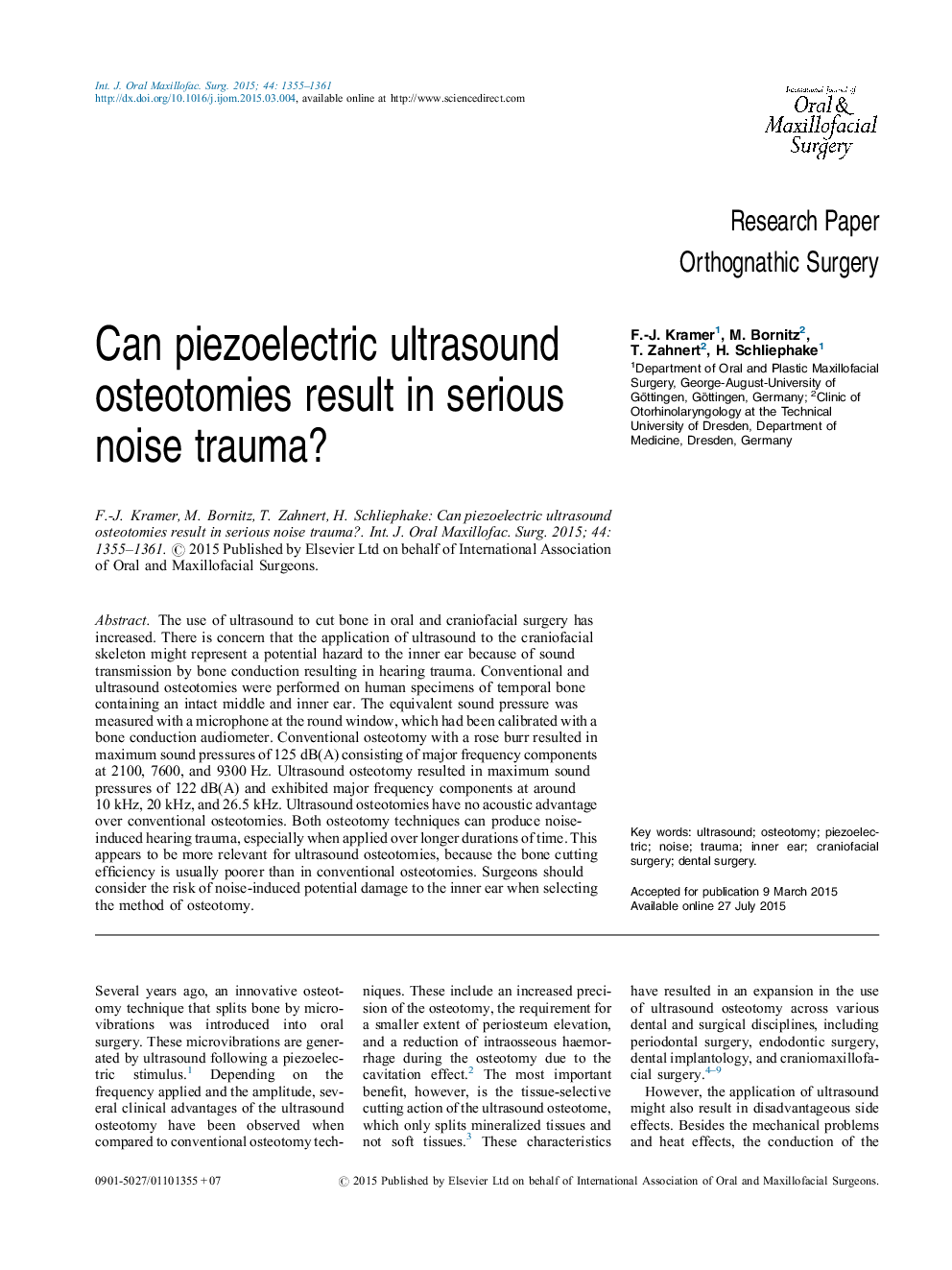| Article ID | Journal | Published Year | Pages | File Type |
|---|---|---|---|---|
| 3132107 | International Journal of Oral and Maxillofacial Surgery | 2015 | 7 Pages |
The use of ultrasound to cut bone in oral and craniofacial surgery has increased. There is concern that the application of ultrasound to the craniofacial skeleton might represent a potential hazard to the inner ear because of sound transmission by bone conduction resulting in hearing trauma. Conventional and ultrasound osteotomies were performed on human specimens of temporal bone containing an intact middle and inner ear. The equivalent sound pressure was measured with a microphone at the round window, which had been calibrated with a bone conduction audiometer. Conventional osteotomy with a rose burr resulted in maximum sound pressures of 125 dB(A) consisting of major frequency components at 2100, 7600, and 9300 Hz. Ultrasound osteotomy resulted in maximum sound pressures of 122 dB(A) and exhibited major frequency components at around 10 kHz, 20 kHz, and 26.5 kHz. Ultrasound osteotomies have no acoustic advantage over conventional osteotomies. Both osteotomy techniques can produce noise-induced hearing trauma, especially when applied over longer durations of time. This appears to be more relevant for ultrasound osteotomies, because the bone cutting efficiency is usually poorer than in conventional osteotomies. Surgeons should consider the risk of noise-induced potential damage to the inner ear when selecting the method of osteotomy.
